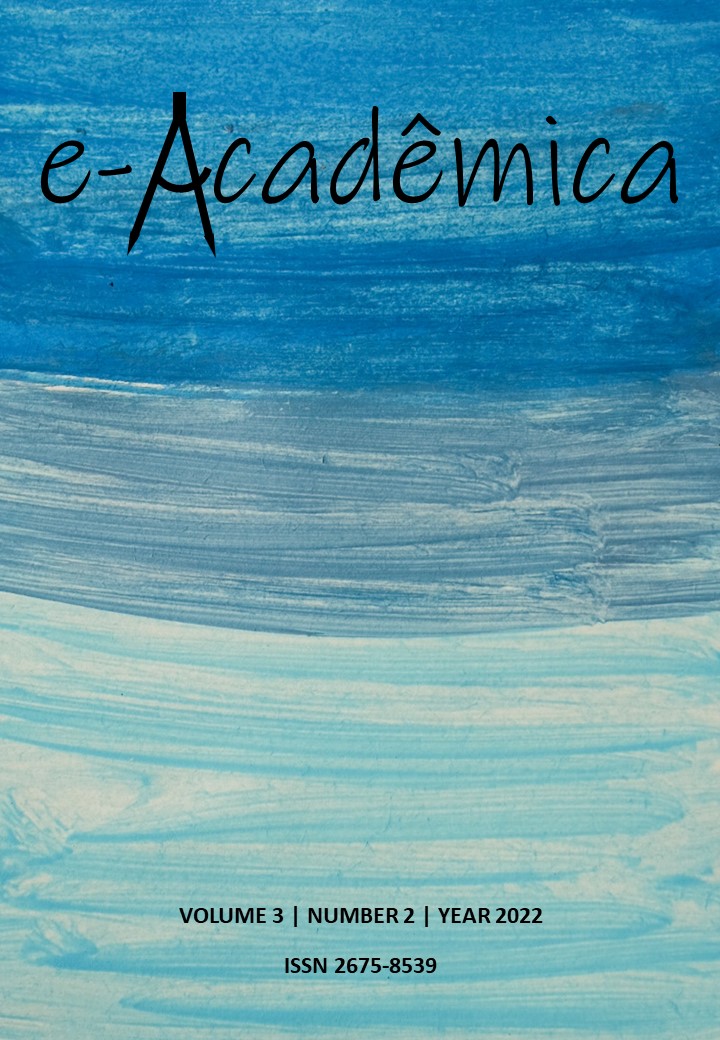Microbial profile in response to the implementation of full capacity plan in the reference unit for burn treatment in Sergipe
DOI:
https://doi.org/10.52076/eacad-v3i2.220Keywords:
Burns; Burn units; Cross infection.Abstract
Objective: The study goals to describe the microbiology profile of patients admitted to the Burn Care Unit (UTQ) at the Sergipe’s Hospital of Urgencies (HUSE) in response of implementation of Full Capacity Plan (PCP) in November of 2021 to march of 2022. Methods: Retrospective, descriptive study with a quantitative approach, with data analysis being carried out through existing medical records in the HUSE UTQ, focusing on the microbial infection profile of patients hospitalized between November 2021 and March 2022. Results: A total of 298 medical records were evaluated, 290 from burn patients and 8 from non-burned patients relocated to the unit. Of these, 47 cultures were collected, with 43 bacteria (91.5%) and 4 fungi (8.5%). In the comparison between the two groups studied, the most prevalent microorganism in the period without PCP was Acinetobacter baumannii complex (38.2%) and Stenotrophomonas maltophilia prevailed (30.8%) in the group exposed for 5 months to the plan, highlighting if the detection of fungi such as Candida tropicalis (7.7%) and Trichosposon asahii (7.7%). Conclusion: Despite being a study with a reduced volume of data and in a short period of time, it is possible to perceive a change in the pattern in the unit's microbial profile, making room for bacteria that are more resistant to antibiotics and opportunistic fungi.
References
American Burn association (ABA): Associação Americana de Queimaduras. Manual do Provedor de Suporte Avançado de Vida em Queimaduras. Chicago. 2011. 25-27
American Burn Association (ABA): Crisis standards of care for the care of the burn injured patient during the COVID-19 crisis, 2020. Recuperado de http://ameriburn.org/wp-content/uploads/2020/03/aba-crisis-standards-of-care_final-3-20-20-1.pdf
Brasil. Ministério da Saúde. Cartilha para tratamento de emergência das queimaduras. Brasília, 2012, 9 p. Recuperado de https://bvsms.saude.gov.br/bvs/publicacoes/cartilha_tratamento_emergencia_queimaduras.pdf
Burns. (2018). WHO | World Health Organization. https://www.who.int/en/news-room/fact-sheets/detail/burns
Clivatti GM, et al. Avaliação do impacto no atendimento de pacientes com ferimentos descolantes durante a pandemia de COVID-19 em serviço especializado. Rev. Bras. Cir. Plást. 2021 ;36(4):424-430
Cruz BF, Cordovil PBL, Batista KNM. Perfil epidemiológico de pacientes que sofreram queimaduras no Brasil: revisão de literatura. Rev Bras Queimaduras2012;11(4):246-250
Governo de Sergipe (2022). Plano de Capacidade Plena do HUSE prevê medidas e ações para aprimorar o atendimento e gerenciar casos de superlotação. Recuperado de https://www.saude.se.gov.br/plano-de-capacidade-plena-do-huse-preve-medidas-e-acoes-para-aprimorar-o-atendimento-e-gerenciar-casos-de-superlotacao/
Macedo JLS, Santos JB (2006). Complicações Infecciosas em Pacientes Queimados. Ver. Bras. Cir. Plást;21(2):108-111
Marques MD, Amaral V, Marcadenti A. Perfil epidemiológico dos pacientes grandes queimados admitidos em um hospital de trauma. Rev Bras Queimaduras 2014;13(4):232-235
Mendes, ICM. ECCMID 2022: Gram-negativos de interesse na terapia intensiva, parte II -S. maltophilia. PEBMED. Recuperado de https://pebmed.com.br/eccmid-2022-gram-negativos-de-interesse-na-terapia-intensiva-parte-ii-s-maltophilia/
Michael, D; et al (2021). UpToDate – Evidence-based Clinical Decision Support | Wolters Kluwer. Recuperado de https://www.uptodate.com/contents/epidemiology-of-burn-injuries-globally?search=Burn%20Specific%20Health%20Scale%20(BSHS)%20&source=search_result&selectedTitle=21~150&usage_type=default&display_rank=21#references
Oliveira FL, Serra MCVF (2011). Infecções em queimaduras: revisão. Rev Bras Queimaduras;10(3):96-99
Ramakrishnan, M; Putli bai, S; Babu, M (2016). Study on biofilm formation in burn wound infection in a pediatric hospital in Chennai, India - PubMed. (n.d.). PubMed. Recuperado de https://pubmed.ncbi.nlm.nih.gov/28289362/
Santos, GP; Freitas, NA; Bastos, VD; Carvalho, FF. Perfil epidemiológico do adulto internado em um centro de referência em tratamento de queimaduras. Rev Bras Queimaduras. 2017; 16(2): 81-86
Silva SA, et al. Impacto da quarentena pela COVID-19 no perfil epidemiológico de queimados em Minas Gerais, Brasil. Rev Bras Queimaduras 2020; 19(1):2-10
Downloads
Published
How to Cite
Issue
Section
License
Copyright (c) 2022 Larissa Sá dos Santos; Mariana de Vasconcelos Barreto Rodrigues; Rômulo Carvalho Costa ; Francisca Roberta Oliveira Silva; Beatriz Oliveira Santos; Rosa Carolina Santos de Oliveira; Ana Cláudia de Brito Câmara; Bruno Barreto Cintra

This work is licensed under a Creative Commons Attribution 4.0 International License.
Autores que publicam nesta revista concordam com os seguintes termos:
1) Autores mantém os direitos autorais e concedem à revista o direito de primeira publicação, com o trabalho simultaneamente licenciado sob a Licença Creative Commons Attribution que permite o compartilhamento do trabalho com reconhecimento da autoria e publicação inicial nesta revista.
2) Autores têm autorização para assumir contratos adicionais separadamente, para distribuição não-exclusiva da versão do trabalho publicada nesta revista (ex.: publicar em repositório institucional ou como capítulo de livro), com reconhecimento de autoria e publicação inicial nesta revista.
3) Autores têm permissão e são estimulados a publicar e distribuir seu trabalho online (ex.: em repositórios institucionais ou na sua página pessoal) a qualquer ponto antes ou durante o processo editorial, já que isso pode gerar alterações produtivas, bem como aumentar o impacto e a citação do trabalho publicado.










